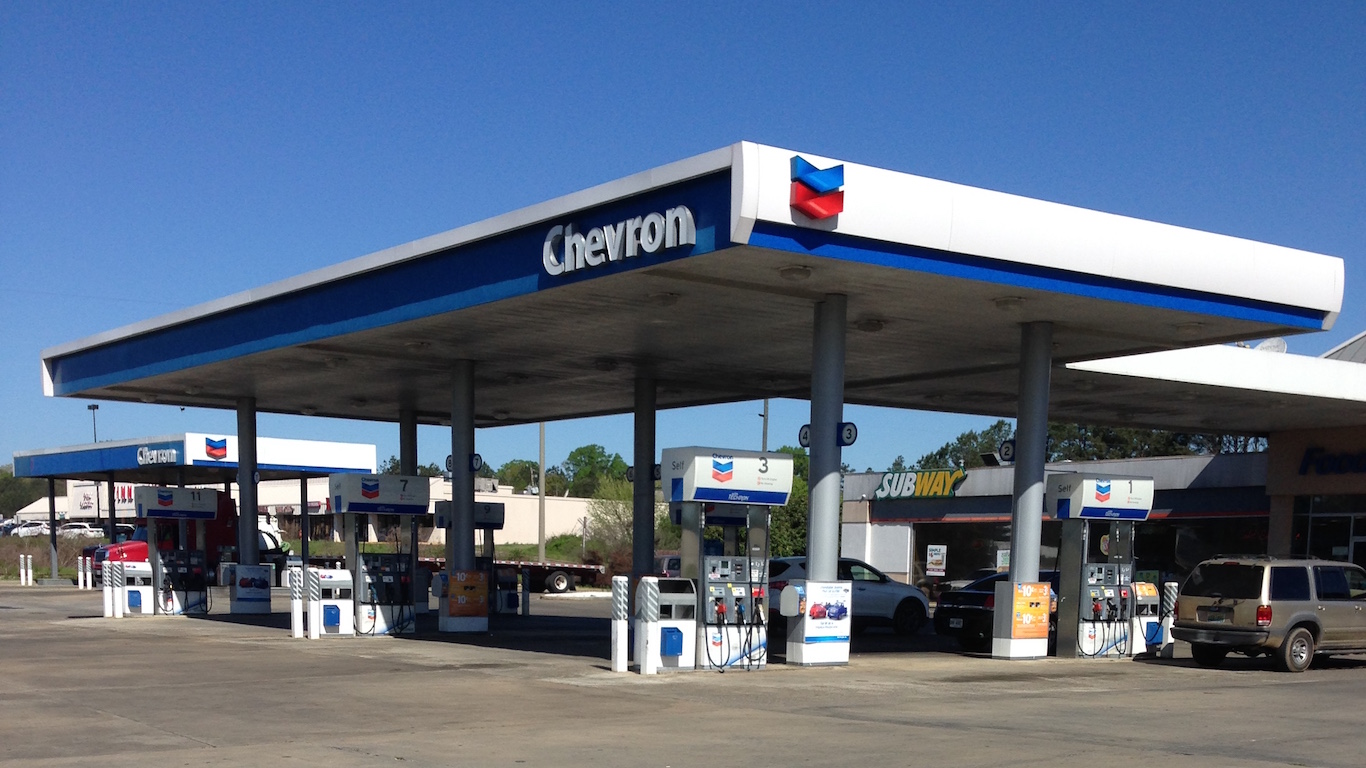
When Chevron Corp. (NYSE: CVX) reported second-quarter results before markets opened Friday, the oil and gas supermajor posted an adjusted loss per share of $1.59 on total revenues of $13.5 billion. In the same period a year ago, the company reported adjusted earnings per share (EPS) of $1.77 on total revenues of $38.9 billion. Second-quarter results also compare to the consensus estimates for a loss per share of $0.92 and $22.1 billion in revenue.
On a GAAP basis, Chevron’s quarterly loss totaled $8.3 billion ($4.44 per share), compared to a year-ago profit of $4.3 billion ($2.27 per share). The GAAP loss included a charge of $1.8 billion related to the commodity price outlook, severance accruals of $780 million and a gain of $310 million on the sale of assets in Azerbaijan. Chevron also fully wrote down its entire $2.6 billion investment in Venezuela.
In the second quarter, impairments and write-offs totaled $5.7 billion. Currency exchange effects lowered earnings by $437 million.
The company said capital and exploratory spending totaled $3.3 billion in the quarter ($7.7 for the year to date). In the quarter, capex was 37% lower compared with the same period last year. Chevron said in April it expects total capital spending for the year of around $14 billion.
Worldwide net oil-equivalent production in the first quarter totaled 2.99 million barrels a day, down about 3.0% year over year. Net oil-equivalent production in the United States totaled 991,000 barrels a day, up by 93,000 barrels year over year. Average U.S. price realizations per barrel of oil dropped from $52 a year ago to $19. That is not a typo.
Internationally, liquids prices fell from $62 a barrel a year ago to $21 a barrel, and net oil-equivalent production fell by 189,000 barrels a day to 2.0 million barrels a day
CEO Michael Wirth noted that while demand and commodity prices have “shown signs of recovery,” neither is near pre-pandemic levels and Chevron expects “depressed” results in the third quarter.
The earnings announcement did not include guidance, but consensus estimates for the third quarter of 2020 call for an earnings per share loss of $0.08 on revenues of $24.6 billion. For the full year, analysts are estimating earnings per share of $0.24 on revenues of $102.9 billion. These estimates are almost certainly too optimistic.
Operating cash flow in the first half of the year totaled $4.8 billion, equal to Chevron’s dividend payments. At the end of the first quarter, the company said it expected to make its dividend payments from operating cash flow.
Crude prices have returned to around $40 a barrel and have traded in a narrow band around that price for about six weeks now. Barring another monumental collapse, Chevron’s third-quarter results should improve, although the company does not expect a return to pre-COVID-19 price levels.
Chevron’s shares traded down about 2.6% in Friday’s premarket, at $84.00 in a 52-week range of $51.60 to $125.27. The consensus 12-month price target was $100.71 before this morning’s report. Chevron’s dividend yield is 5.98% at an annualized rate of $5.16.
It’s Your Money, Your Future—Own It (sponsor)
Are you ahead, or behind on retirement? For families with more than $500,000 saved for retirement, finding a financial advisor who puts your interest first can be the difference, and today it’s easier than ever. SmartAsset’s free tool matches you with up to three fiduciary financial advisors who serve your area in minutes. Each advisor has been carefully vetted and must act in your best interests. Start your search now.
If you’ve saved and built a substantial nest egg for you and your family, don’t delay; get started right here and help your retirement dreams become a retirement reality.
Thank you for reading! Have some feedback for us?
Contact the 24/7 Wall St. editorial team.




